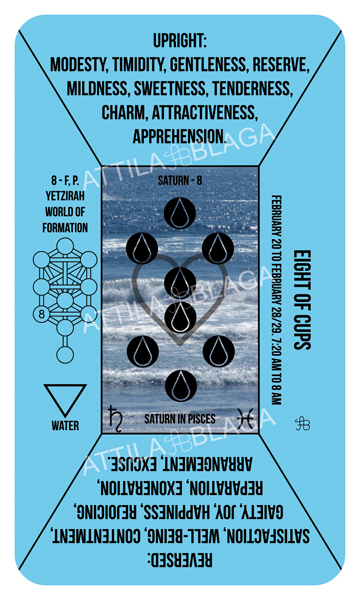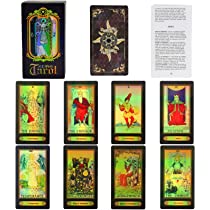
It is best to shuffle cards three to four time. Before dealing the cards, do this. After that, you can shuffle them again before you start playing. There are several types of shuffles available, including the Pile, Smoosh and Mongean.
Dovetail shuffle
The dovetail shuffle is another variant of faro shuffle. Also known as a weave, shuffle. It involves holding half of the deck in each hand with the thumbs facing inward. The cards fall to the table interleaved as they are released.
In the Dovetail shuffle, a deck of n cards is split into two parts, with the two stacks interleaved. This method is similar in principle to the riffle shuffle but involves fewer steps. A deck with n cards is broken into two stacks. Each stack has a different turn number. GSR modeling, a computer program, simulates this physical process. The GSR model splits the deck into halves and drops cards according to how many cards remain in each stack. This is done by taking into account the likelihood that a card from the left stack will fall before the right, and vice versa.

Pile shuffle
If you want to shuffle a deck of cards without rearranging the deck's layout, you can try a pile shuffle. This involves placing cards on top of each other so that the pile looks even. Then, you must shuffle the rest of your cards. If you're fortunate, you'll get a similar result every single time.
Many professional shufflers use the pile shuffle as a strategy. The idea behind a pile shuffle is to divide a deck into stacks, remove stuck cards from one pile, then put the cards back together. Professionals often prefer the pile to riffle shuffle.
Smoosh shuffle
The smoosh is an efficient way to shuffle cards. This method involves placing cards face down and randomly mixing the cards with your hands. It is very simple and takes only a few minutes to do.
There are three methods to shuffle cards. These are: The riffle, pile and "smoosh” shuffle. Each method requires a different level of skill. You will need an empty deck and a deck not yet stacked to smoosh cards.

Mongean shuffle
If you're wondering how to shuffle a Mongean deck of cards, you're in luck. It's easy and involves simply transferring the highest card from the deck to your right. Repeat this until all cards on the right are transferred. This will fill the deck with sequentially numbered cards.
A Monge is a shuffle on a deck that contains ten cards. This is a permutation. This means that cards in positions two, five, eight, and eight will be kept in the jumbled order. A card will then be in place four after each shuffle. The four cards you want will then be in the same spot. The three other cards might be in a slightly different order.
FAQ
Can I make money from my hobby?
You can have many hobbies that lead to extra income.
You might consider selling items that are related to your hobby if you are passionate about it.
A website might be a good idea if your hobby is collecting stamps.
This will allow you to earn additional income without having go through the hassles of buying and selling stamps.
You could also create a YouTube channel to talk about your hobby.
This allows you to share your passion with others and potentially generate additional revenue by offering premium content.
What is a good hobby for kids?
Any activity that kids enjoy as a hobby is something they do outside of the normal routine. You might find them interested in drawing, building things, painting, writing stories, playing with toys, listening to music, reading books, watching TV, and playing computer games. They may also like to play soccer, football, basketball, cricket, rugby, baseball, and hockey.
Parents worry that their children might get in trouble if they are allowed to do what they like. It is not true. Your child won't get in trouble if they are safe and don't do any harm to anyone.
It is important that people remember that simply because they love doing something does not mean they will always do it. If they are passionate about drawing but hate writing, they might choose to draw pictures over writing.
There are many types of hobbies. It's up to you to choose one that you really enjoy.
What is the cost of a hobby?
Hobby costs nothing except time. If you are serious about your hobby it could take years before you achieve your goals.
But there is one thing you can do to help yourself. It's called "passion." If you are passionate about what you do, it will be easier to work hard and make progress.
After you've put in hours, you might become addicted. This is when the real fun begins. Because you now enjoy what you do and are improving your skills every day. By the end of the year you'll have probably made a lot of progress.
Do not worry about the time it takes. Don't be afraid to try. You might just surprise yourself!
Why do we have hobbies?
Hobbies are an important part of our lives because they give us time to relax, unwind, think creatively, exercise, socialize and enjoy ourselves. They also provide us with opportunities for learning new skills and developing valuable life-long interests.
Hobbies allow us to find meaning in our lives.
These are a great way for you to have some free time, even if there isn't much else.
They're even fun!
If you don't have time for a hobby, then you probably don't have time for anything else either.
Consider all of the possibilities available to your. Maybe you should consider starting a hobby.
What are observation hobbies?
Observation hobbies can be activities that you watch people do. They might include watching sports, reading books, going on holiday, etc. It could also include observing others.
Observation hobbies are great because they help you learn how to think creatively. You can apply this knowledge later on when you work with others.
You'll discover that it's easier to learn if there's a passion for something.
If you're interested in football, for instance, you could watch it or read a book. To learn more about photography, it is possible to visit and take photos.
If you enjoy playing music, you could play along to songs online or buy a guitar.
You could also choose to cook at home or go to restaurants if you are a good cook.
If gardening interests you, you could plant vegetables or flowers.
If dancing is something you enjoy, join a dance class.
If you like painting, you could paint pictures.
If you like writing, you could write stories or poems.
Drawing pictures is a great hobby.
If you are passionate about animals, you can look after them or work at the zoo.
If science interests you, you can study biology, chemistry or physics.
You can read books, listen to podcasts, or watch films if history interests you.
If you like traveling, you could travel abroad or explore your local area.
How do I find a hobby to pursue?
When you first start your journey into finding a hobby, you may feel like you've got nothing to choose from.
You're probably thinking, "I'm not very artistic," or "I'm terrible at sports," or maybe even "I don't know anything."
You probably have plenty of experience and knowledge to use when you are looking for hobbies.
It's simply that you haven’t yet realized it.
Take a look at the contents of your home. What amount of stuff do you have?
Do you have any old toys lying around?
Perhaps you have a collection.
Perhaps you have always wanted to be a chef.
Maybe you want to get back into playing the guitar.
It doesn't matter what it is, you can probably turn it into a hobby.
It is important to recognize that you already have a lot of experience to draw from.
You will find a hobby you love once you have it.
Is it possible for a hobby to make you rich?
Not necessarily.
However, if you're interested in creating a business based on your hobby, then you could definitely end up being wealthy.
Let's suppose you enjoy cooking. You love healthy food and decided to open a restaurant.
You serve only organic meals made from scratch and charge customers a small fee to cover the costs of ingredients and labor.
Over time, you grow your clientele and eventually hire employees who work alongside you.
You may eventually add vegan dishes and gluten-free options to your menu.
In this scenario, you've created a successful business that has allowed you to live the type of lifestyle you wanted.
Of course, this doesn't mean you must give up your day job.
You could also run your restaurant, while still maintaining your 9-5 job.
Statistics
- The intensity of the dialogue partners' bond at the end of the forty-five-minute vulnerability interaction was rated as closer than the closest relationship in the lives of 30 percent of similar students. (time.com)
- Almost 80% of people claim to have no hobby. (hobbylark.com)
- Studies show that just six minutes of reading can reduce stress levels by 60 percent. (oberlo.com)
- This 100% accurate personality-analyzing hobby quiz discovers your passion based on your characteristics. (quizexpo.com)
- I am 100% biologically a woman (discover.hubpages.com)
External Links
How To
How to Start Gardening
Gardening is one among the oldest forms. It requires persistence, patience, and determination. The first step to starting a garden is to pick a spot where you will grow food. You can choose to have a large area or a small one in your backyard. Next, choose what kind of plants you would like to grow. Do you prefer flowers or vegetables? Some people are passionate about growing herbs, while others like raising livestock like rabbits. Before you decide on the type of crops you want to plant, it is important to consider the space available. If you live somewhere that has cold winters, it might be a good idea to grow berries or fruits.
After you have decided what you want to plant, it is important that you prepare the soil. It is vital that your soil is prepared properly to determine whether or not your plants will thrive. Organic matter is essential for the health and well-being of your plants. Organic matter includes things like leaves, twigs, grass clippings, manure, and compost. After you have prepared your soil you must add nutrients. You may need different amounts depending on what type of plants you are trying to grow. You can calculate these values online with a fertilizer calculator. There are many fertilizers to choose from, so it is important that you are familiar with the product you are using.
After you have prepared your soil, and added the correct nutrients, you will need to wait until your seed germinates. The process typically takes 2 to 3 weeks depending on the weather conditions and temperature in your area. After seeds have sprouted, water them every day. Problems can arise if you water your plants too frequently or too little. Ensure you give your plants enough water at regular intervals and avoid overwatering. Overwatering can cause root rot or fungal diseases. Remember that plants need less water in the summer than they do in the winter. You should also remember that some plants will need to dry out once they have been watered. For example, tomatoes need to stay slightly moist but not wet. Soggy soil is not good for them. After plants finish flowering, they need to go dormant. Dormancy occurs when plants stop producing any new growth and start to store energy for the next harvest. Dormancy means that the plant stops communicating with its roots about producing food. Throughout this time, plants can store energy. However, the plant will die if temperatures drop below freezing or there is insufficient sunlight.
If you live in an urban environment, you may find yourself limited in the kinds of plants that you can grow. Concrete sidewalks, roads or parking lots can block sunlight from reaching urban areas. Concrete absorbs light which blocks sunlight from reaching the ground below. Many plants can't survive in urban environments due to lack of sunlight. There are still plants that thrive in urban environments. Many trees, shrubs, perennials, and other plants can adapt to urban life. Many annuals can also be grown indoors in container gardens. You can have fresh greenery all year round with container gardens.
Now that you have decided where to place your garden, chosen what you will grow, and prepared your soil, you are ready to plant!